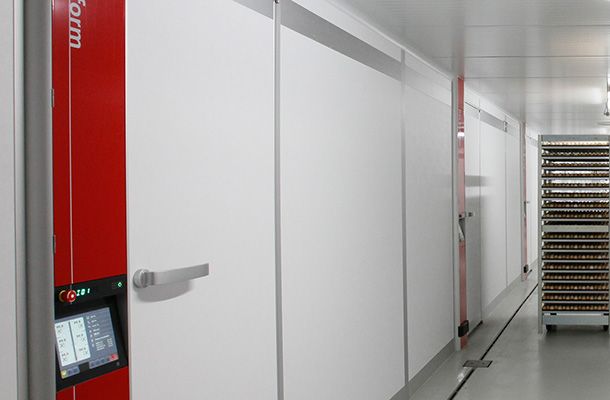Multistage incubation – selecting optimum settings
Tags: Incubation | Whitepaper
, 16 June 2020

On the face of it, multistage incubation is an easy procedure. The setter is loaded with a new batch of eggs as the oldest batch in the setter reaches the point of needing to be transferred. A fully loaded machine contains eggs at all stages of incubation, and the average incubation age will be about 9 days. At this stage in a single-stage incubation programme, the eggs do not produce a lot of heat and their oxygen demand is limited.
Multistage incubation does not present great technological challenges. The setter can work at constant, fixed settings, aiming to create acceptable conditions for all batches. The trouble is that this 'average load' consists of batches that are in very different phases of incubation: from eggs that have just been loaded to eggs about to be transferred. The average set points might be close to the optimum for the middle groups, but they will be far from optimum for the extremes. And it is the extremes that determine the results. Too low a temperature at the beginning will cause an increase in early embryonic death. Overheating during the last days will lead to late mortality and poor chicken quality.
The eggs themselves offer a solution, however. Their opposing requirements can be utilised for mutual benefit. Fresh eggs are cool when loaded and need to be heated. Eggs containing advanced embryos must be cooled. Placing these two groups next to each other creates an opportunity for mutual heat exchange.
Although all incubator manufacturers claim that their machines create a very uniform environment, breaking the laws of physics is not that easy. Differences in air speed, distance to the coolers, heaters, humidifiers and air inlets matter, and are reflected in egg shell temperature. Cooler and warmer zones can be defined in all types of equipment, and this can be made use of in a multistage system by placing the egg batches accordingly.
Temperature is of course not the only important parameter. Selection of the correct humidity setting, in line with the local egg shell quality, is critical for achieving 11-13% weight loss.
Typically, the standard settings for a multistage incubator are: T 99.50F, RH 50%, valve 50% (or CO2 0.4%). The value of the parameters can vary quite widely, however. For example, optimum temperature can range from 99.0 to 99.9 0F.
So, how to select the optimum setting? The advice will depend on local measurements and observations, which must be carried out routinely: measuring egg shell temperature, calculating egg weight loss, and monitoring the machine's behaviour.
In a smoothly working incubator, internal devices will show low activity, the machine appearing to do nothing. Loading a new batch of eggs will activate heating, but this will stabilise again within a few hours.
Overheating presents a higher risk than slightly too low temperatures. Egg shell temperature between 99.4 and 99.70F will slow down the process, while a temperature above 102.00F poses a risk.
Advice:
- Define the cooler and warmer parts of the setter, specific to the equipment type.
- Load the fresh eggs accordingly and place them next to the older eggs.
- Prewarm the eggs before loading (for at least 12 hours at 25-26 0C) to mitigate the resulting drop of temperature.
- Avoid egg shell temperatures below 99.0 0F and above 102.0 0
- Check egg weight loss to select the RH setpoint.
- Select the maximum valve position within the 30-60% range at which the machine remains stable. Opening too wide activates the humidifiers, which is undesirable, and opening too little can cause too high CO2
Written by Maciej Kolańczyk
Senior Hatchery Specialist
I welcome your feedback on this article - and if you require any additional information, please don't hesitate to contact me.